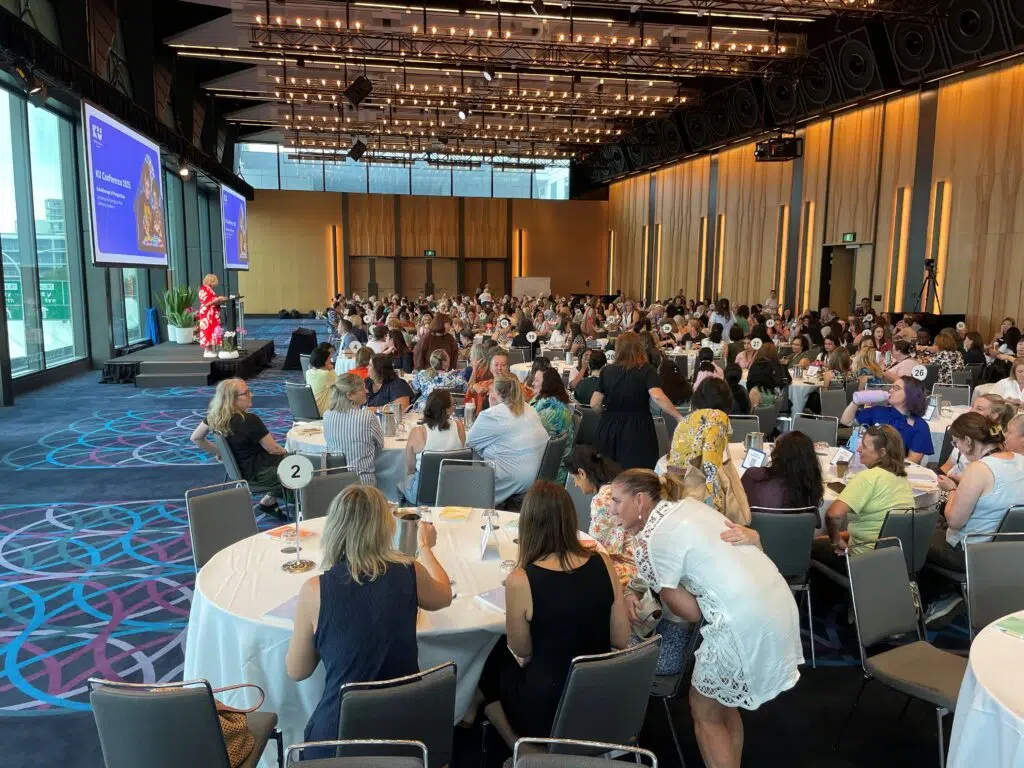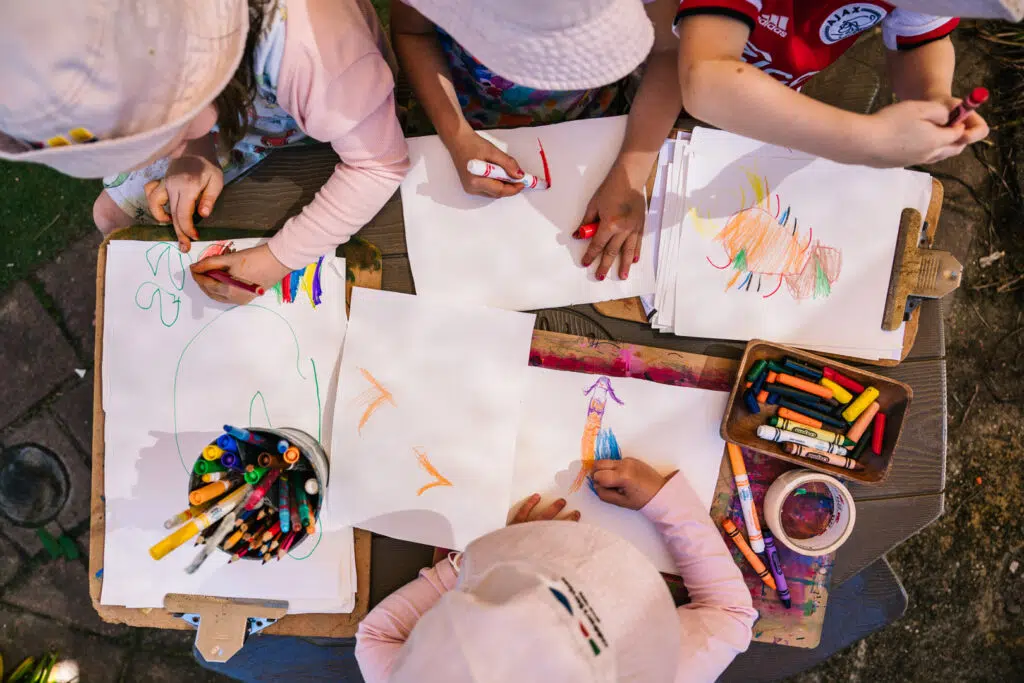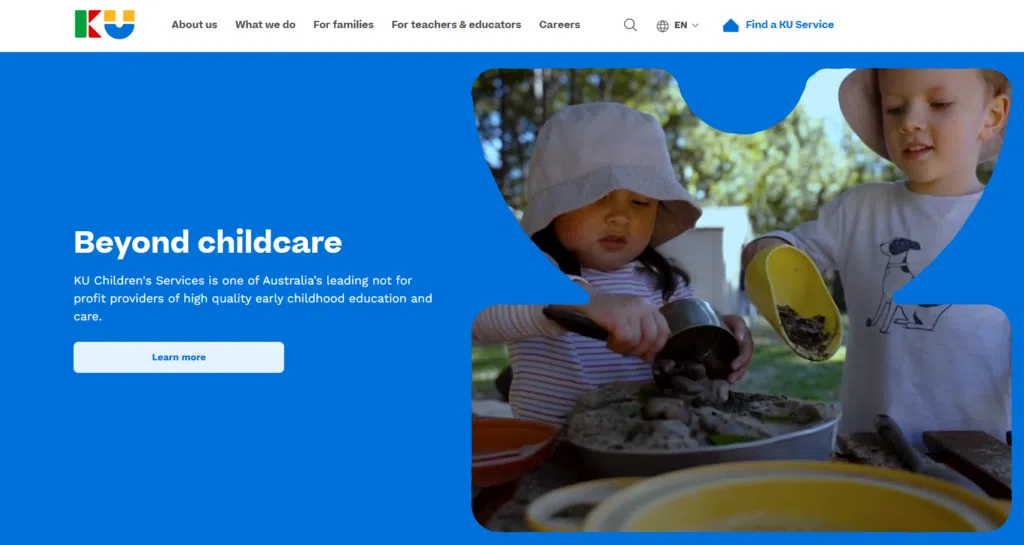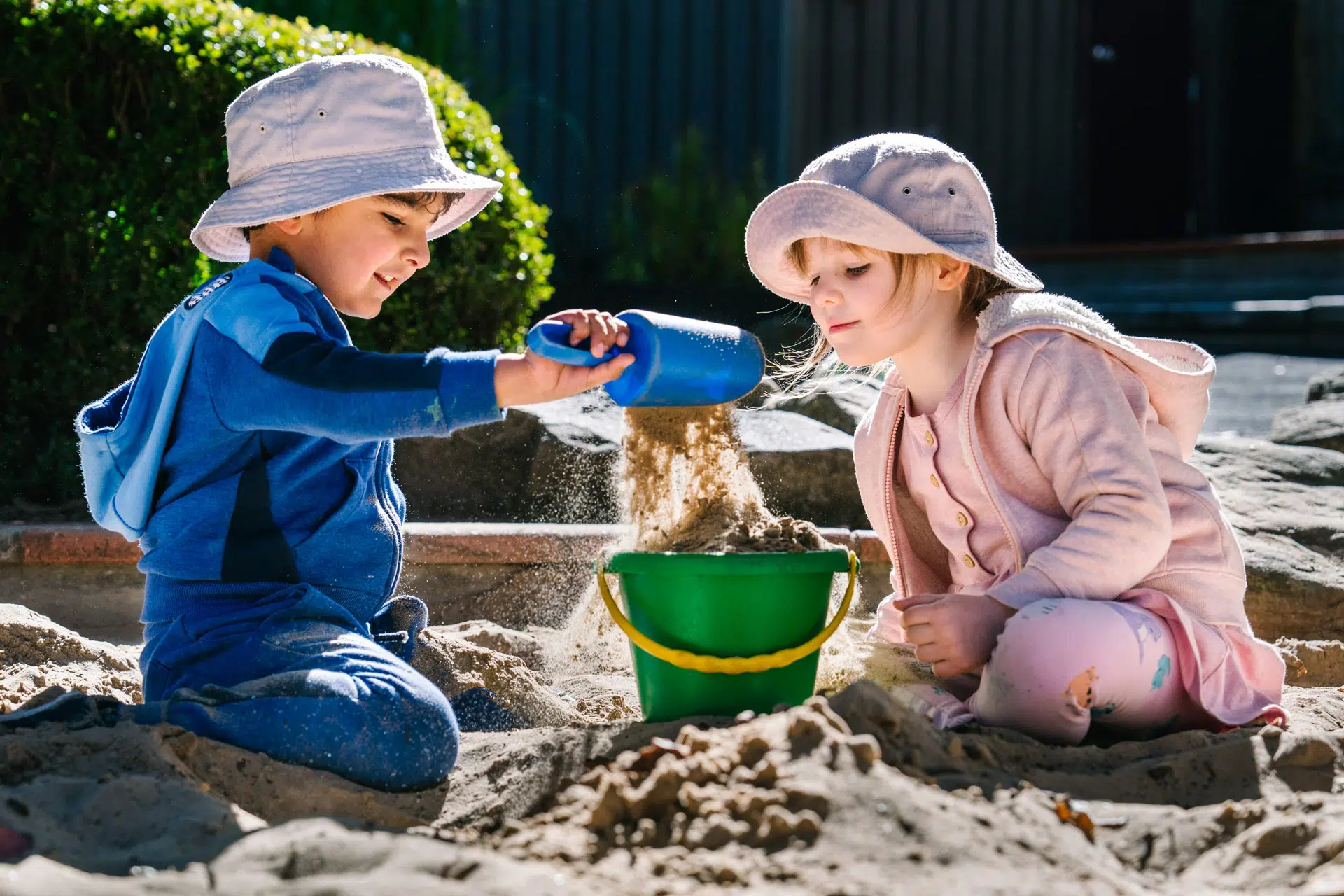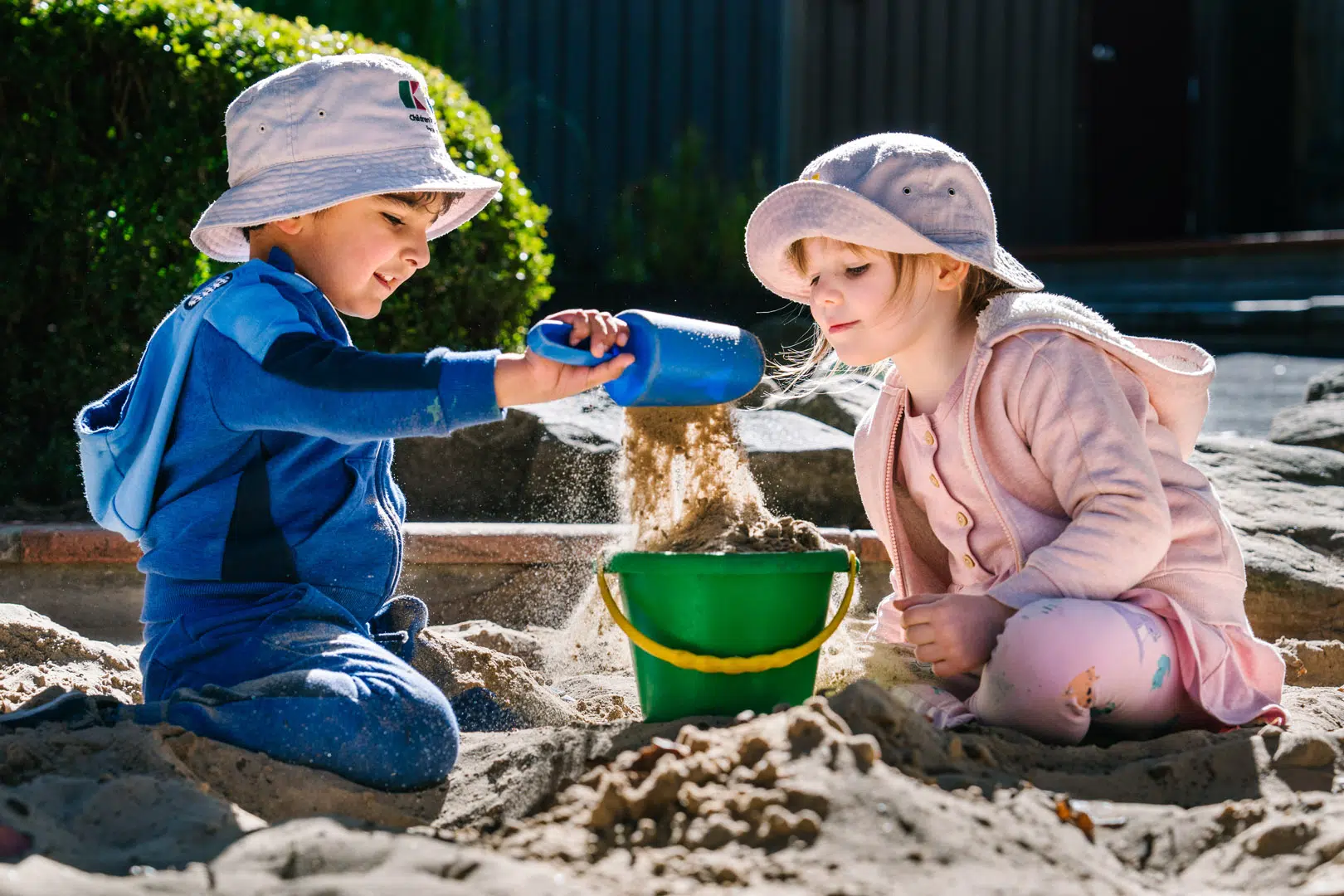
The quintessence of play: what can we learn from children?
Fran Bastion invites us to consider the simplicities as well as complexities of play and to contemplate its role in early childhood programs.
By Fran Bastion, KU Learning and Development
April 2025
“
Play is freedom, time, and space, it’s what I do when everyone else has stopped telling me what to do
Anonymous
The Early Years Learning Framework for Australia (EYLF) endorses play-based learning as a context and a process for learning through which children organise and make sense of their social worlds, as they engage actively with people, objects and representations. It is fundamental to the healthy development and wellbeing of individuals and communities (EYLF V2.0, P.21)
When we truly consider the simplicities and complexities of children’s play, educators must appreciate the reciprocity and interconnection of teaching and learning that is buoyed by joyful curiosities, potential problems, relational exchanges, risk and reverence. This intersection of playful exchanges and rich learning opportunities is transparent in environments that elevates play as a right and as integral to the seamless growth and development of a learning community.
As we contemplate the role of play across the early years learning landscape as well as the ECA Statement on Play (2023) that states, “Every child has a universal right to play and that play is essential and valuable,” we can be prompted to consider what author, philosopher and guide William Martin offers as some food for thought in his book “The Parent’s Tao Te Ching”, (Marlowe & Company, 1999):
Your children have important lessons to learn, but even more important ones to teach.
What can they teach?
How to pay complete attention,
How to play all day without tiring.
How to let one thing go, and move on to another with no backward glances.
How to move and sit with no tension in the muscles, no stress in the bones.
…What will you learn from them today?
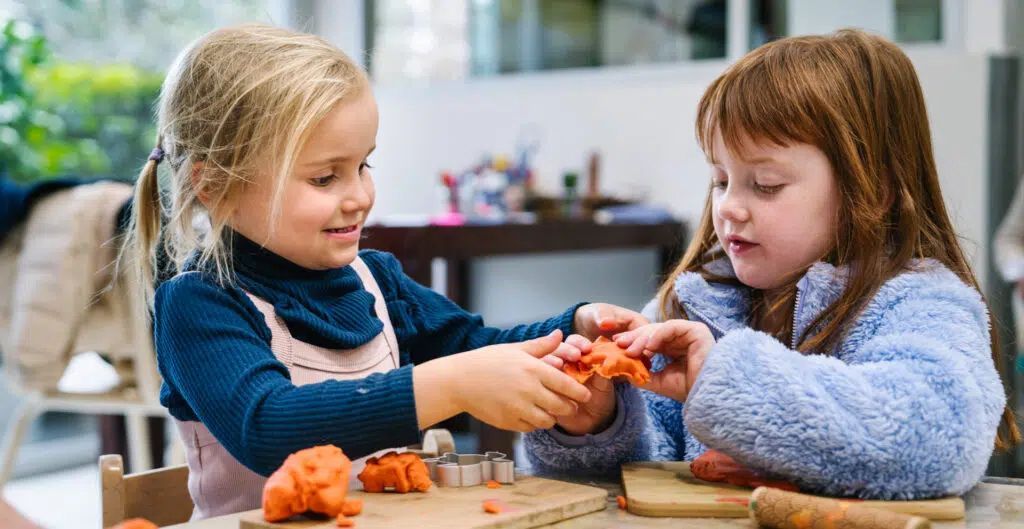
I wonder how rich our encounters with young children might be if every time we taught a new skill or shared a bright idea from our repertoire of professional knowledge, we stopped, observed and waited until children taught us one of theirs? What then would we learn from the children we share our days with?
Sally Jenkinson (2001) asks us to consider that in giving primacy to adult knowledge, to our ‘grown- up’ ways of seeing the world, have we forgotten how to value other kinds of wisdom? Do we still care about the small secret corners of children’s wisdom? What do children know that we have forgotten?
Is the domain of the imagination an essential tool of the mind and a fundamental way of thinking? Is this unique to children’s play, and their stories?
When we encounter these stories alive with colour and courage do we listen intently and ask them to share more. Are we then open, responsive, energised and inspired by the telling and retelling of children’s stories as they sing them, and paint them, and dance them and shape them into clay. We are built for play and built through play and if we listen and observe carefully, and respect children’s generous invitations to play, we just may discover that play energises you, lifts you out of the mundane, eases your burdens, renews your optimism, and opens you up to new possibilities.
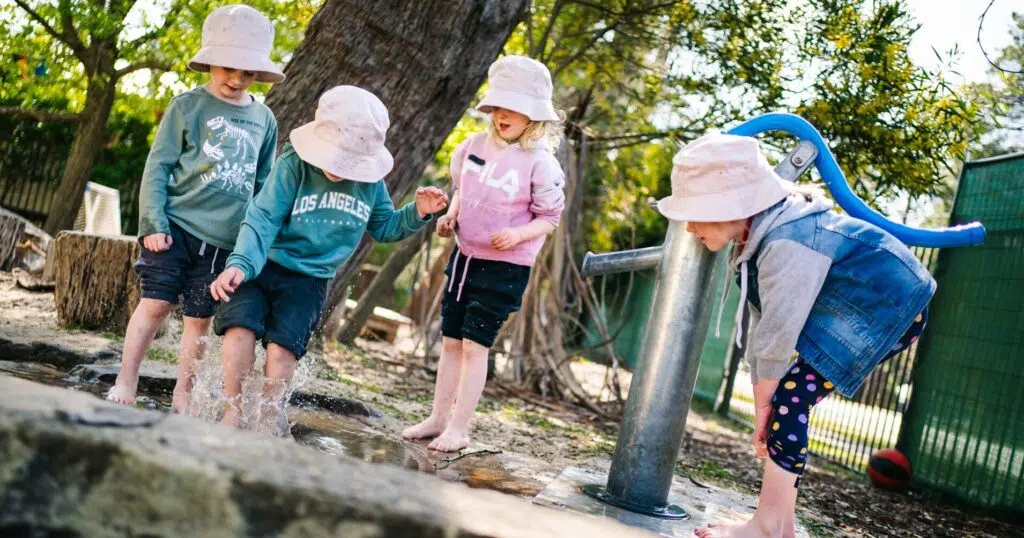
Malaguzzi suggests that “Children’s intelligence asks adult intelligence to be on the same high level as children’s expectations and potentials” (Loris Malaguzzi). It is therefore incumbent upon us to create space in our lives to think and see differently, to be influenced by children’s innate initiatives to enliven our imagination, be awaken to pleasure, move toward freedom, and let joy in.
We can learn more from children’s creativity and play. We can become more adaptable, attuned and fun.
Ann Pelo’s philosophy highlights relational reciprocity when adults centre their attention on the child’s perspective. This approach recognises the inherent value of the child’s experiences, emotions, questions and enormous capacities to play with ideas. Instead of expecting a child to meet the educator on their terms they should shift their focus to align with children’s attention and curiosities, creating space for co-learning, and co teaching as a shared endeavour. Leaning into a rhythmic cadence as dance partners in the learning process.
Malaguzzi has greatly influenced the image we hold of children; his poem ‘100 languages’ is made of 100 invites us to think about the potentiality of a rich and rewarding learning landscape when we ponder and are guided by the 100 languages of children.
The child
is made of one hundred.
The child has
a hundred languages
a hundred hands
a hundred thoughts
a hundred ways of thinking
of playing, of speaking.
A hundred always a hundred
ways of listening
of marveling of loving
a hundred joys
for singing and understanding
a hundred worlds
to discover
a hundred worlds
to invent
a hundred worlds
to dream.
The child has
a hundred languages
(and a hundred hundred hundred more)
So, what now….
What can we learn from the children we encounter?
References
Australian Government Department of Education (2022) Belonging Being and Becoming: The Early Years Learning Framework for Australia V2.0. Australian Government Department of Education Ministerial Council
Early Childhood Australia (ECA). (2023). Statement on Play. Canberra, ACT: ECA. https://www.earlychildhoodaustralia.org.au/our-work/eca-statement-on-play/
Jenkinson, S. (2001) Genius of play: celebrating the spirit of childhood. Hawthorn Press
Malaguzzi, L (n.d.) The 100 Languages. Accessed https://www.reggiochildren.it/en/reggio-emilia-approach/100-linguaggi-en/
Martin, W. (1999) The parent’s Tao Te Ching. USA: DA CAPO PR INC
Pelo, A and Carter, M (2028) From Teaching to thinking: A Pedagogy for Reimagining our Work. Exchange Press
Want to know more?
Join our 1-day event Creating a place for play where we will explore:
- How to create environments that value play.
- The importance of aesthetics, resources, and materials.
- How to involve children in decision-making and caring for the play environment.
- Being a play partner with children.

